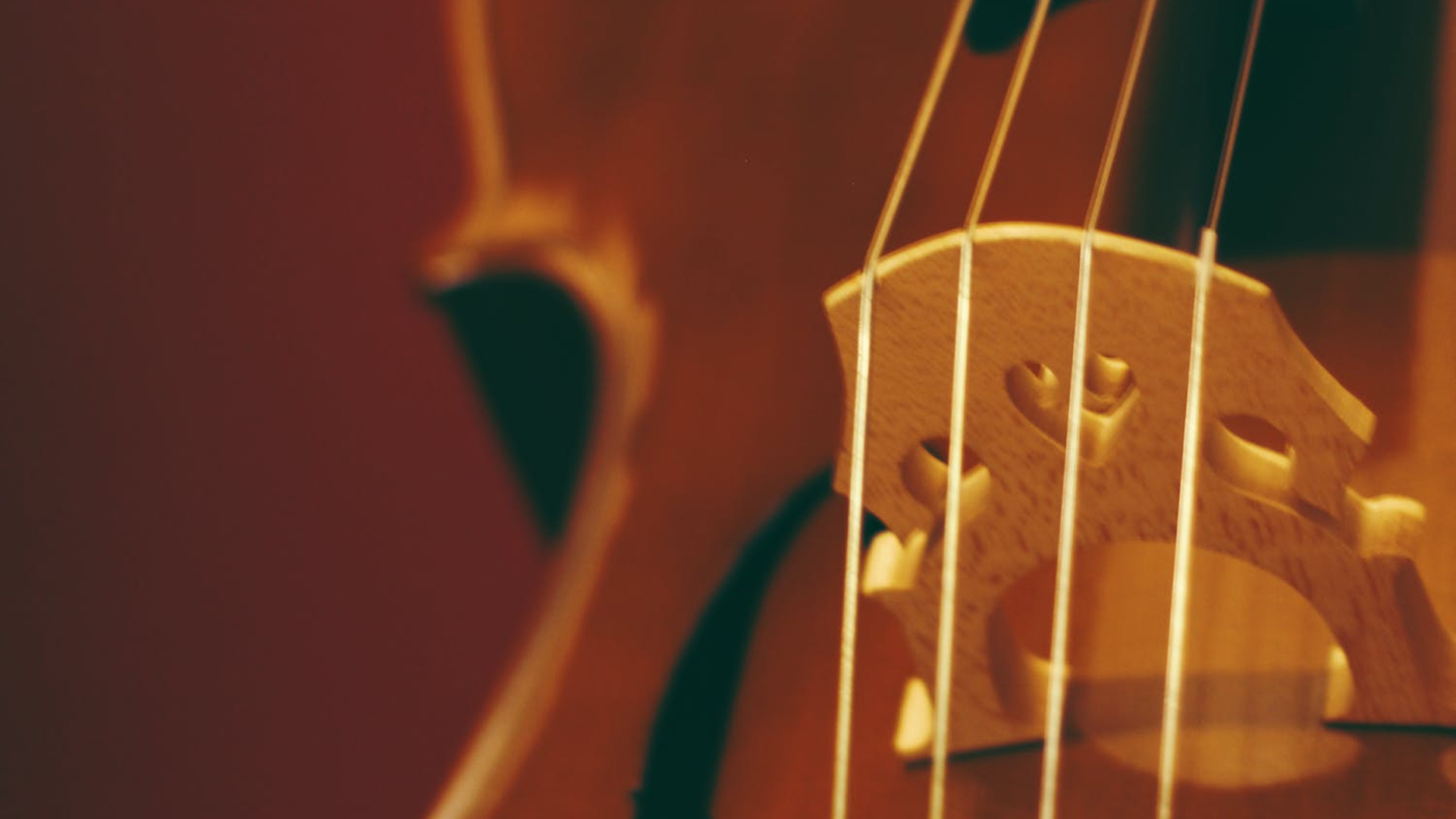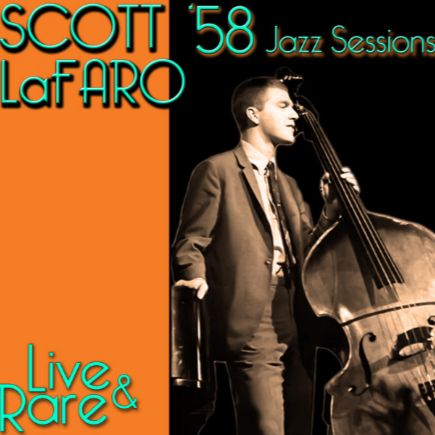Scott LaFaro, l’art du contrepoint moderne
Rocco Scott LaFaro, contrebassiste américain au destin aussi fulgurant que marquant, a profondément transformé le rôle de la basse dans le jazz moderne. Né à Newark, il commence la musique par la clarinette avant d’adopter la contrebasse à l’adolescence, après que sa famille eut déménagé à New York. Doué d’une oreille exceptionnelle et d’une technique novatrice, il s’impose très tôt comme l’un des musiciens les plus prometteurs de sa génération.
Après des débuts dans des formations de rhythm and blues, il se tourne rapidement vers le jazz. Entre 1956 et 1957, il rejoint le trompettiste Chet Baker à Los Angeles, où son jeu souple et audacieux attire l’attention des figures de la côte Ouest. Il collabore ensuite avec le guitariste Barney Kessel et le vibraphoniste Cal Tjader, et participe à plusieurs sessions d’enregistrement avec le pianiste Victor Feldman. En 1959, une tournée avec le clarinettiste Benny Goodman l’amène à se produire sur les grandes scènes américaines, avant qu’il ne s’installe définitivement à New York.
C’est là qu’il rencontre Bill Evans et intègre son trio, aux côtés du batteur Paul Motian. Cette formation, active de 1959 à 1961, marque une rupture décisive dans l’histoire du jazz. Sur les albums Portrait in Jazz, Explorations et Sunday at the Village Vanguard, LaFaro redéfinit la contrebasse comme instrument d’interaction, libérée de sa fonction d’accompagnement. Son jeu inventif, fondé sur un contrepoint permanent avec le piano d’Evans et les nuances subtiles de Motian, crée un dialogue d’une intensité inédite. Ensemble, ils inaugurent une forme d’improvisation collective où la respiration et l’équilibre remplacent la hiérarchie instrumentale traditionnelle.
En parallèle, Scott LaFaro collabore avec Ornette Coleman sur Ornette! (1961) et participe à l’album emblématique Free Jazz, partageant la section rythmique avec Charlie Haden. Son approche mélodique et son sens du rythme en font un partenaire idéal pour les explorateurs du jazz avant-gardiste.
La mort tragique de Scott LaFaro, à seulement 25 ans, dans un accident de voiture en juillet 1961, met fin à une carrière aussi brève qu’influente. Mais son héritage demeure immense: en moins de cinq ans, il aura bouleversé la conception de la contrebasse jazz, en la transformant en instrument de dialogue et d’émotion pure, au cœur du langage du trio moderne.
Scott LaFaro, el arte del contrapunto moderno
Rocco Scott LaFaro, contrabajista estadounidense de destino tan fulgurante como trascendental, transformó profundamente el papel del bajo en el jazz moderno. Nacido en Newark, comenzó su formación musical con el clarinete antes de adoptar el contrabajo durante la adolescencia, tras el traslado de su familia a Nueva York. Dotado de un oído excepcional y de una técnica innovadora, pronto se impuso como uno de los músicos más prometedores de su generación.
Tras sus primeros pasos en formaciones de rhythm and blues, se orientó rápidamente hacia el jazz. Entre 1956 y 1957, se unió al trompetista Chet Baker en Los Ángeles, donde su estilo fluido y audaz atrajo la atención de las figuras de la costa oeste. Colaboró luego con el guitarrista Barney Kessel y el vibrafonista Cal Tjader, y participó en varias sesiones de grabación con el pianista Victor Feldman. En 1959, una gira con el clarinetista Benny Goodman lo llevó a presentarse en los grandes escenarios de Estados Unidos, antes de establecerse definitivamente en Nueva York.
Allí conoció a Bill Evans e ingresó en su trío junto al baterista Paul Motian. Esta formación, activa entre 1959 y 1961, marcó una ruptura decisiva en la historia del jazz. En los álbumes Portrait in Jazz, Explorations y Sunday at the Village Vanguard, LaFaro redefinió el contrabajo como un instrumento de interacción, liberado de su función de acompañamiento. Su estilo inventivo, basado en un contrapunto constante con el piano de Evans y las sutilezas rítmicas de Motian, generó un diálogo de intensidad inédita. Juntos inauguraron una forma de improvisación colectiva donde la respiración y el equilibrio sustituyen la jerarquía instrumental tradicional.
Paralelamente, Scott LaFaro colaboró con Ornette Coleman en Ornette! (1961) y participó en el emblemático Free Jazz, compartiendo la sección rítmica con Charlie Haden. Su enfoque melódico y su sentido del ritmo lo convirtieron en un compañero ideal para los innovadores del jazz de vanguardia.
La trágica muerte de Scott LaFaro, con solo 25 años, en un accidente automovilístico en julio de 1961, puso fin a una carrera breve pero decisiva. Su legado, sin embargo, permanece inmenso: en menos de cinco años transformó la concepción del contrabajo en el jazz, convirtiéndolo en un instrumento de diálogo y emoción pura, en el corazón del lenguaje del trío moderno.
Scott LaFaro, l’arte del contrappunto moderno
Rocco Scott LaFaro, contrabbassista americano dal destino tanto fulmineo quanto determinante, ha trasformato profondamente il ruolo del basso nel jazz moderno. Nato a Newark, iniziò lo studio musicale con il clarinetto prima di dedicarsi al contrabbasso durante l’adolescenza, dopo il trasferimento della famiglia a New York. Dotato di un orecchio eccezionale e di una tecnica innovativa, si affermò rapidamente come uno dei musicisti più promettenti della sua generazione.
Dopo gli inizi in gruppi di rhythm and blues, si orientò presto verso il jazz. Tra il 1956 e il 1957 suonò con il trombettista Chet Baker a Los Angeles, dove il suo stile fluido e audace attirò l’attenzione delle figure più importanti della West Coast. Collaborò poi con il chitarrista Barney Kessel e il vibrafonista Cal Tjader, partecipando a diverse sessioni di registrazione con il pianista Victor Feldman. Nel 1959, una tournée con il clarinettista Benny Goodman lo portò sui principali palchi americani, prima del suo trasferimento definitivo a New York.
Qui conobbe Bill Evans ed entrò a far parte del suo trio insieme al batterista Paul Motian. Questa formazione, attiva tra il 1959 e il 1961, segnò una svolta decisiva nella storia del jazz. Negli album Portrait in Jazz, Explorations e Sunday at the Village Vanguard, LaFaro ridefinì il contrabbasso come strumento d’interazione, liberato dal tradizionale ruolo d’accompagnamento. Il suo stile inventivo, basato su un contrappunto costante con il pianoforte di Evans e le sottili sfumature di Motian, creò un dialogo di intensità inedita. Insieme inaugurarono una forma di improvvisazione collettiva in cui il respiro e l’equilibrio sostituiscono la gerarchia strumentale classica.
Parallelamente, Scott LaFaro collaborò con Ornette Coleman in Ornette! (1961) e partecipò all’album iconico Free Jazz, condividendo la sezione ritmica con Charlie Haden. Il suo approccio melodico e il senso del ritmo lo resero un partner ideale per gli innovatori del jazz d’avanguardia.
La morte tragica di Scott LaFaro, a soli 25 anni, in un incidente d’auto nel luglio del 1961, pose fine a una carriera breve ma rivoluzionaria. Tuttavia, la sua eredità rimane immensa: in meno di cinque anni cambiò la concezione del contrabbasso jazz, trasformandolo in uno strumento di dialogo ed emozione pura, al centro del linguaggio del trio moderno.
Scott LaFaro: the art of modern counterpoint
Rocco Scott LaFaro, an American bassist whose brilliant yet brief career left a lasting mark, profoundly reshaped the role of the bass in modern jazz. Born in Newark, he began his musical training on the clarinet before switching to the double bass as a teenager, after his family moved to New York. Gifted with an exceptional ear and an innovative technique, he quickly emerged as one of the most promising musicians of his generation.
After early work in rhythm and blues groups, he turned decisively toward jazz. Between 1956 and 1957, he joined trumpeter Chet Baker in Los Angeles, where his fluid and daring playing drew the attention of leading West Coast figures. He went on to collaborate with guitarist Barney Kessel and vibraphonist Cal Tjader, and took part in several recording sessions with pianist Victor Feldman. In 1959, a tour with clarinetist Benny Goodman brought him to major concert halls across the United States before he settled permanently in New York.
There, he met pianist Bill Evans and joined his trio alongside drummer Paul Motian. Active from 1959 to 1961, this ensemble marked a decisive turning point in jazz history. On Portrait in Jazz, Explorations, and Sunday at the Village Vanguard, LaFaro redefined the double bass as an instrument of interaction, freed from its traditional accompanying role. His inventive style, built on continuous counterpoint with Evans’s piano and Motian’s subtle rhythmic textures, created an unprecedented sense of dialogue. Together, they pioneered a collective improvisational language in which breath and balance replaced conventional instrumental hierarchy.
At the same time, Scott LaFaro collaborated with Ornette Coleman on Ornette! (1961) and appeared on the landmark Free Jazz, sharing the rhythm section with Charlie Haden. His melodic phrasing and rhythmic awareness made him an ideal partner for the leading innovators of avant-garde jazz.
Scott LaFaro’s tragic death at just 25, in a car accident in July 1961, cut short a career of extraordinary promise. Yet his legacy endures: in less than five years, he transformed the role of the jazz bass, turning it into an instrument of dialogue and pure emotion — at the very heart of the modern trio’s language.


